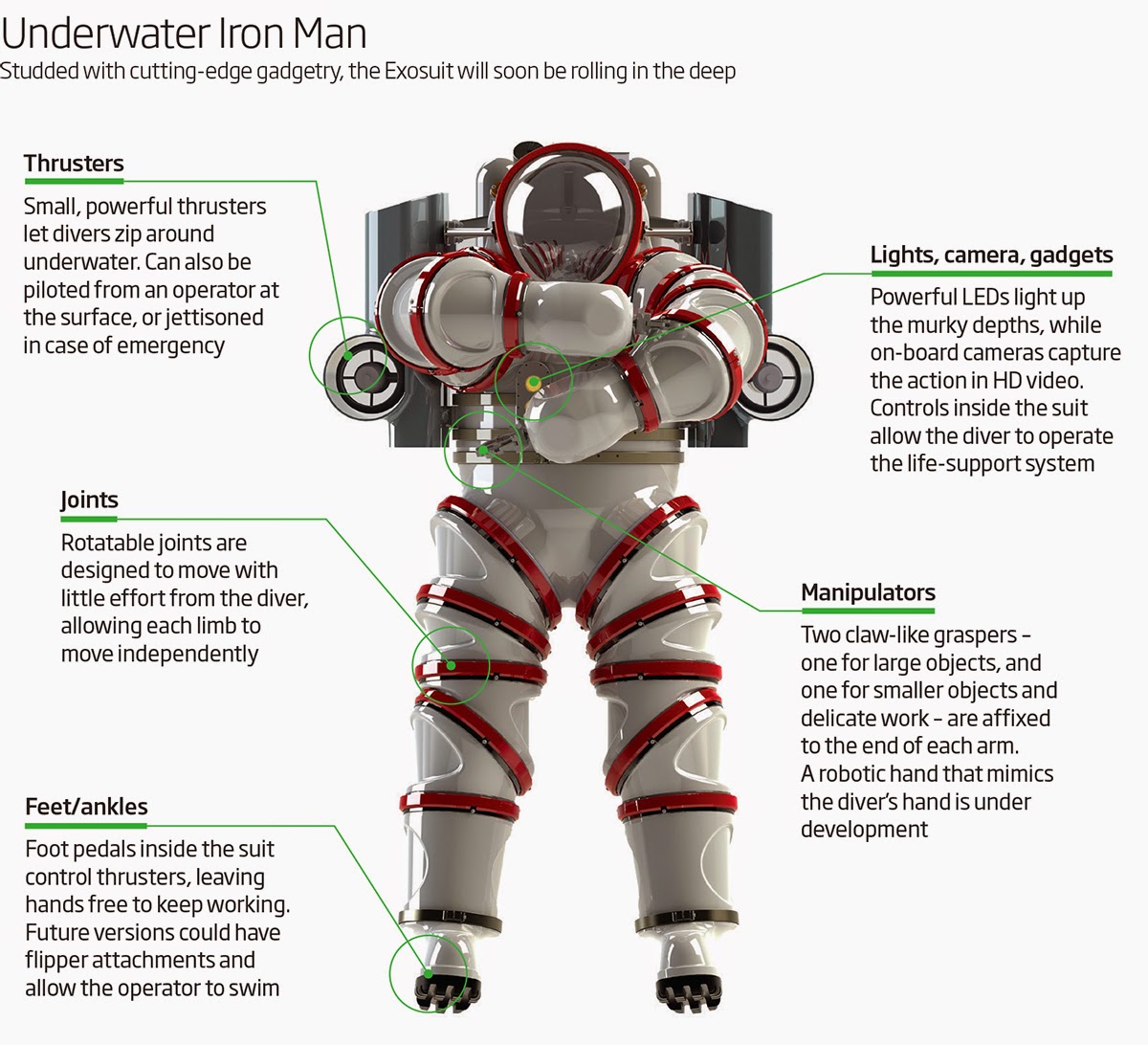| Online: | |
| Visits: | |
| Stories: |

| Story Views | |
| Now: | |
| Last Hour: | |
| Last 24 Hours: | |
| Total: | |
Exosuit dives to 300 meters and is basically a wearable submarine
The Exosuit, a next-generation atmospheric diving system that will allow divers to explore marine environments at a depth of 1,000 feet, is going on public display for the first time from February 27 through March 5. The 6.5-feet-tall, 530-pound hard-metal suit will allow divers the dexterity to perform tasks such as imaging marine animals in their natural habitat with high-resolution underwater cameras while providing protection from the ocean's pressure.
The Exosuit was designed and constructed by Nuytco Research Ltd.
Marine archaeologists normally wear scuba gear to explore underwater sites in person, but the time that divers can spend at depth is limited by the dangers of decompression sickness, or the bends. For deep wrecks, researchers rely on remotely operated vehicles (ROVs) carrying cameras and sonar to scan an area, or large and expensive craft like the Alvin submarine that explored the wreck of the Titanic in 1986.
The $1.5 million Exosuit falls somewhere in between. “It's basically a wearable submarine,” says Phil Short, a diving specialist on the planned mission to Antikythera. “The pressure inside is no different from being in a submarine or in fresh air. We can go straight to the bottom, spend 5 hours there and come straight back to the surface with no decompression.”
The suit is made from an aluminium alloy, with articulated joints that permit divers to move their arms and legs freely. An umbilical cable from a ship supplies it with power for horizontal and vertical thrusters, and a rebreather that scrubs toxic carbon dioxide from exhaled air, giving 50 hours of life support. The cable also carries voice, video and data links. In the event of an emergency, a battery can power everything but the thrusters, including a back-up communication system.
Source: http://nextbigfuture.com/2014/06/exosuit-dives-to-300-meters-and-is.html




